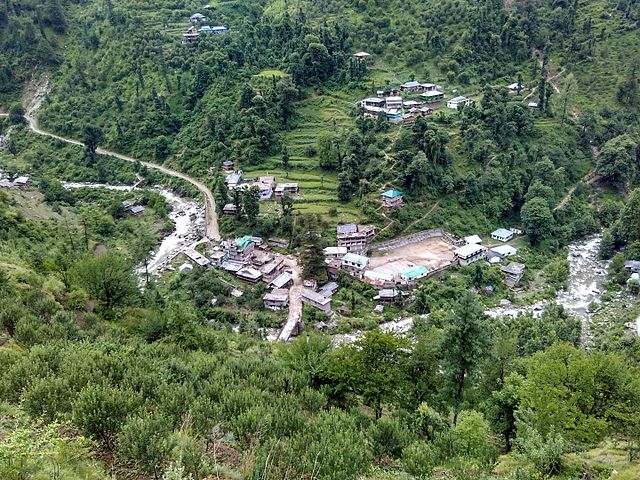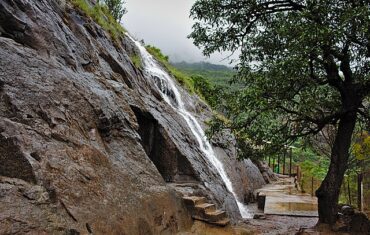Tirthan Valley is a scenic valley located in the Kullu district of Himachal Pradesh. It derives its name from the Tirthan River that flows through it. It is also the gateway to the Great Himalayan National Park, a UNESCO World Heritage Site. Tirthan Valley is a haven for nature lovers and adventure seekers who want to experience the pristine beauty and diversity of the Himalayas. Visit during Kullu Manikaran Local sightseeing. In this article, we will explore the location, timing, entry fees, significance, things to do, and FAQs of this valley.
Overview of Tirthan Valley

Tirthan Valley is situated at an altitude of 1600 metres above sea level and covers an area of about 150 sq km. It is surrounded by snow-capped peaks, lush green forests, meadows, waterfalls, and streams. It is home to a rich variety of flora and fauna, including rare and endangered species such as Himalayan brown bear, snow leopard, musk deer, monal, and western tragopan. It is also known for its trout fishing, trekking, camping, birdwatching, and wildlife watching activities. Tirthan Valley has a pleasant climate throughout the year, with temperatures ranging from 0°C to 25°C.
Location of Tirthan Valley

Tirthan Valley is located about 50 km from Kullu town and 500 km from Delhi. It is easily accessible by road from Kullu town and other nearby places. The nearest airport is at Bhuntar, which is about 48 km from the valley. The nearest railway station is at Joginder Nagar, which is about 165 km from the valley.
Timing / Entry Fees Tirthan Valley

Tirthan Valley is open for visitors throughout the year. However, the best time to visit is from March to June and September to November, when the weather is pleasant and the valley is in full bloom. There is no entry fee for visiting the valley. However, if you want to enter the Great Himalayan National Park, you need to obtain a permit from the forest department at Sai Ropa or Gushaini. The permit fee is Rs. 100 per person per day for Indians and Rs. 500 per person per day for foreigners.
How to Reach Tirthan Valley from City Centre

The valley is about 50 km from Kullu town, which can be reached by auto-rickshaw, taxi, or bus. The nearest bus stand is at Aut, which is about 26 km from the valley. From Aut, you can take a local bus or hire a taxi to reach Gushaini or Banjar, which are the main entry points to the valley. From there, you can explore the valley by foot or by local transport.
Things to Do / Must See Tirthan Valley
- Enjoy trout fishing in the crystal clear waters of the Tirthan River. You can either bring your own fishing equipment or rent it from local operators. You can also get a fishing license from the forest department at Sai Ropa or Gushaini.
- Trek to various destinations in and around the valley such as Jalori Pass, Serolsar Lake, Raghupur Fort, Chehni Kothi, Sarchi Village, etc. You can either join a guided trek or go on your own with proper maps and equipment.
- Camp in the wilderness and experience the thrill of staying close to nature. You can either pitch your own tent or book a campsite from local operators. You can also enjoy bonfires and stargazing at night.
- Birdwatching and wildlife watching in the Great Himalayan National Park and its buffer zone. You can spot various species of birds such as Himalayan griffon vulture, lammergeier, golden eagle, Himalayan monal, etc. You can also spot various species of mammals such as Himalayan brown bear, snow leopard, musk deer, Himalayan tahr, etc.
- Visit the local villages and interact with the friendly and hospitable people of Tirthan Valley. You can learn about their culture, traditions, cuisine, and lifestyle. You can also buy some local handicrafts and souvenirs from them.
Significance of Tirthan Valley
Tirthan Valley is a significant destination for nature lovers and adventure seekers who want to explore the unspoilt beauty and diversity of the Himalayas. It is also a significant destination for conservationists and researchers who want to study and protect the rich biodiversity of the Great Himalayan National Park and its buffer zone. Tirthan Valley is a living example of how humans and nature can coexist in harmony and mutual respect.
FAQs
Q: What are the accommodation options in Tirthan Valley? A: There are various accommodation options in Tirthan Valley such as homestays, guesthouses, cottages, resorts, and campsites. You can choose according to your budget and preference. However, it is advisable to book in advance as the valley gets crowded during peak seasons.
Q: What are the essential things to carry for Tirthan Valley? A: Some of the essential things to carry for Tirthan Valley are warm clothes, raincoat, trekking shoes, sunscreen, sunglasses, hat, water bottle, snacks, torch, first aid kit, camera, binoculars, fishing equipment, and permit.
Q: What are the safety precautions to follow in Tirthan Valley? A: Some of the safety precautions to follow in Tirthan Valley are to respect the local culture and customs, avoid littering and polluting the environment, avoid venturing into restricted areas or alone at night, avoid feeding or disturbing the wildlife, follow the instructions of the guides and forest officials, and inform someone about your itinerary and whereabouts.
Conclusion
Tirthan Valley is a paradise for nature lovers and adventure seekers who want to experience the pristine beauty and diversity of the Himalayas. It is also a paradise for conservationists and researchers who want to study and protect the rich biodiversity of the Great Himalayan National Park and its buffer zone. Tirthan Valley is a perfect getaway for anyone who wants to witness the beauty and diversity of Kullu valley.










